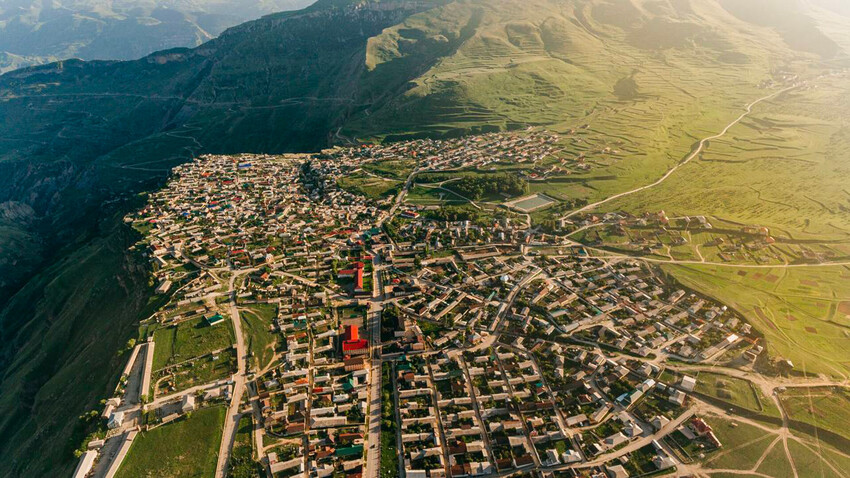
This village in Dagestan, Russia, is built right on the edge of a mountainous plateau.
Some of the dwellings in the area actually overhang the steep cliff. As if it is not enough, owners of some of the houses construct balconies that protrude even further and quite literally hang over the precipice.
Below, there is an abyss some 100 meters deep.
The village of Khunzakh is located in Dagestan, 140 km from Makhachkala, the republic’s capital, on a mountainous plateau two kilometers above sea level.
Historians believe the first settlement in this area appeared in the sixth century AD. At that time, the city was the capital of an ancient Christian state named Sarir.
The rise of Muslim states in the region led to the disintegration of Sarir in the 12th century. Islam emerged as the dominant religion in the area where the Christian state used to be.
In the 13th century, Khunzakh became the capital of the newly formed Avar Khanate.
In 1864, the Russian Empire conquered the Avar Khanate and made it a part of its territory.
To repel the attacks of local disobedient highlanders and strengthen its position in the region, Russians built the Khunzakh fortress.
The Khunzakh fortress was protected from cannons by nearly meter-thick walls. During the Russian civil war, a cavalry regiment was stationed there. Later on, the building was used to host a hospital, a school and even an orphanage. Today, the fortress is considered to be an object of cultural heritage in Russia.
Many stone-decorated ancient wells remain in the village. Some of the springs were used to deliver water to the Khunzakh fortress through a system of pipes.
The Tobot waterfall is considered to be one of the most beautiful sites in Khunzakh. In winter, it freezes in the form of an ice pillar. Locals say it remains hollow inside allowing for the water to flow freely.
Currently, a base jumping station operates on the edge of the canyon. Besides stunning views and some pieces of ancient architecture, it is one of the few entertainment sites in this rather small mountainous village, which makes it hard to believe it used to be the capital of the ancient state.
The area is predisposed to strong winds because the village is located on an elevated and flat spot amidst mountains. Local winds often reach a strength of 17-20 meters per second.
Today, more than 4,000 people live in Khunzakh. In contrast, the Khunzakh district unites 61 villages with a total population of about 33,000 people.
The unusual village regularly attracts tourists and photographers, who pursue the stunning views it has to offer.
Dear readers,
Our website and social media accounts are under threat of being restricted or banned, due to the current circumstances. So, to keep up with our latest content, simply do the following:
If using any of Russia Beyond's content, partly or in full, always provide an active hyperlink to the original material.
Subscribe
to our newsletter!
Get the week's best stories straight to your inbox